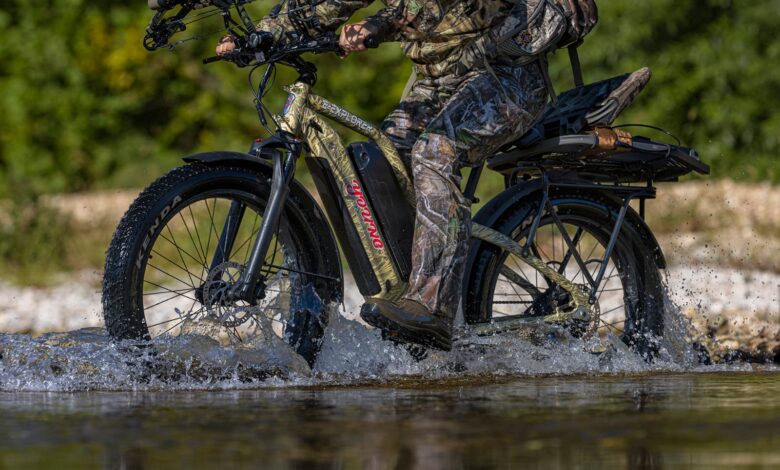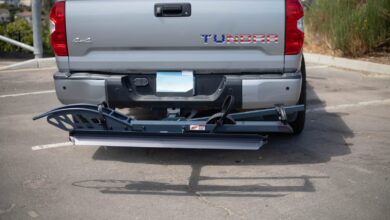Ultimate Guide to Fat Tire Ebike Maintenance: Essential Tips for Longevity and Performance

Introduction
Fat tire ebikes are growing in popularity due to their versatility and ability to handle various terrains. Whether you’re riding through snow, sand, or rough mountain trails, these powerful bikes require specific maintenance to perform optimally. In this guide, we’ll cover the best practices for fat tire ebike maintenance, ensuring your bike stays in top shape for years to come.
Understanding the Basics of Fat Tire Ebike Maintenance
To keep your fat tire ebike performing at its best, regular maintenance is essential. From checking the tires to ensuring the electrical components work smoothly, fat tire ebike maintenance goes beyond just occasional cleaning. A well-maintained bike not only performs better but also extends its lifespan, reducing the need for costly repairs.
Essential Fat Tire Ebike Maintenance Practices
Tire Care: The Foundation of Fat Tire Ebike Maintenance
One of the most important elements of fat tire ebike maintenance is tire care. The unique design of fat tires allows you to tackle rough terrain, but it also means they can suffer from wear and tear faster than standard bike tires. To maintain your fat tires:
- Check Tire Pressure Regularly: Fat tires need to be inflated properly to avoid unnecessary strain on the bike. Underinflated tires can cause more drag, while overinflated tires may make the ride uncomfortable and lead to premature wear.
- Inspect for Damage: Always check the tires for punctures or signs of wear after every ride. If you find a puncture, it’s important to repair it immediately to prevent further damage.
Battery and Electrical System: A Critical Part of Ebike Maintenance
The battery and electrical components of your fat tire ebike are crucial for performance, especially on long rides.Fat tire ebikemaintenance should always include the following steps:
- Keep the Battery Charged: Avoid letting the battery completely drain before charging it. Charging your battery when it’s about halfway discharged will help maintain its health.
- Inspect the Electrical Connections: Loose or corroded connections can lead to performance issues. Regularly check all connections to ensure they’re secure and free from debris or rust.
- Store Your Battery Properly: When storing your ebike for extended periods, remove the battery and store it in a cool, dry place. Avoid extreme temperatures as they can degrade the battery over time.
Drivetrain Maintenance: Keeping Your Ebike Smooth and Efficient
The drivetrain is the heart of your fat tire ebike, enabling it to shift smoothly and provide power to the wheels. Regular maintenance of the drivetrain can help extend the life of your bike and improve its performance:
- Lubricate the Chain Regularly: Apply chain lubricant every few weeks, especially if you ride in wet or muddy conditions. A well-lubricated chain reduces friction, prevents rust, and improves shifting performance.
- Check the Gears and Shifters: Ensure the gears and shifters are working smoothly by testing them during each ride. If you notice any slipping or difficulty shifting, it might be time to clean or adjust the derailleur.
Brakes: Keeping Your Ride Safe
Brakes are one of the most important safety features of your fat tire ebike, and proper maintenance is essential:
- Inspect Brake Pads: Regularly check the brake pads for wear. If they’re too worn down, they should be replaced immediately.
- Adjust the Brakes: If your brakes feel spongy or unresponsive, they may need adjusting. Make sure the brake cables are tight and the pads are aligned with the rim or rotor.
- Clean the Brakes: Dirt and grime can accumulate on your brakes, reducing their effectiveness. Clean the brake pads and rotors regularly to ensure smooth braking.
Regular Cleaning and Maintenance for Longevity
Proper cleaning is a simple but effective way to maintain your fat tire ebike:
- Wash the Frame: After every ride, clean the frame with a damp cloth to remove dirt and debris. Use a bike-specific cleaner to remove any tough grime.
- Avoid Pressure Washers: Although it might seem tempting, using a high-pressure washer can force water into sensitive electrical components. Stick to gentle cleaning methods instead.
Conclusion
Fat tire ebikes offer a thrilling ride on diverse terrains, but they require regular maintenance to keep them in peak condition. From tire care to electrical system upkeep, paying attention to these essential maintenance practices will enhance your riding experience and ensure your bike lasts longer. By incorporating these simple steps into your routine, you can enjoy smooth, safe, and enjoyable rides every time.
FAQs
What is the recommended tire pressure for a fat tire ebike? The recommended tire pressure for a fat tire ebike can vary depending on the tire size and your weight. Generally, it’s best to check the manufacturer’s recommendations, but it typically falls between 10-20 psi.
How often should I charge my fat tire ebike battery? It’s best to charge your fat tire ebike battery when it reaches about 50% capacity. Avoid letting it fully discharge to preserve its lifespan.
Can I ride my fat tire ebike in the rain? Yes, you can ride your fat tire ebike in the rain, but be sure to dry it off afterward and check the brakes and electrical components for any water damage.
How can I make my fat tire ebike last longer? To extend the lifespan of your fat tire ebike, keep it clean, regularly inspect the tires, battery, and drivetrain, and follow proper storage and maintenance practices.
What should I do if my fat tire ebike makes strange noises? If your fat tire ebike makes unusual noises, it could be a sign of a mechanical issue. Check the tires, drivetrain, and brakes for any problems. If the noise persists, take the bike to a professional for a thorough inspection.



